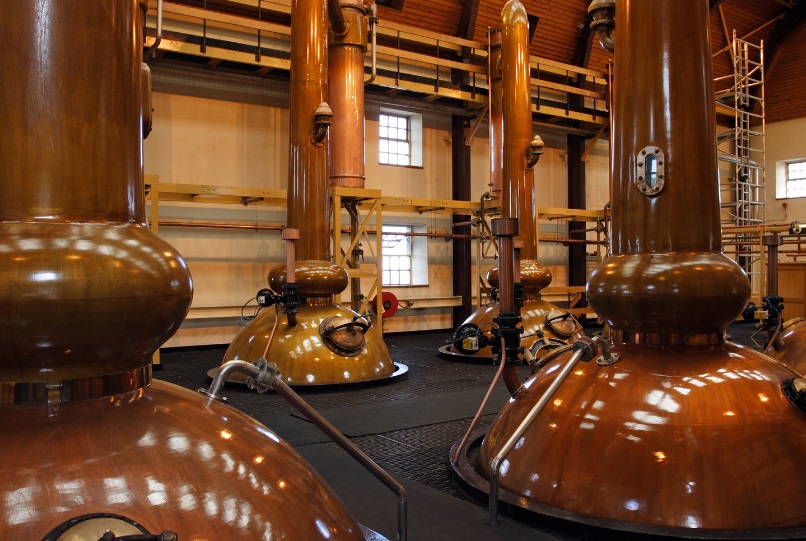The Retail Sector in Scotland
The retail sector in Scotland is a vital component of the country’s economy, contributing significantly to employment, consumer spending, and overall economic growth. It encompasses a broad spectrum of businesses, including supermarkets, high street stores, shopping centers, independent boutiques, and online retailers. While traditional retail has faced challenges in recent years, particularly with the rise of e-commerce, changing consumer preferences, and the impact of the COVID-19 pandemic, the sector continues to evolve and adapt. Scotland’s retail industry is focusing on innovation, sustainability, and consumer-centric approaches to meet the needs of modern shoppers.
1. Overview of Scotland’s Retail Sector
The retail sector is one of the largest employers in Scotland, providing jobs to approximately 10% of the workforce. Retail contributes substantially to Scotland’s GDP, with an emphasis on both urban centers, such as Edinburgh and Glasgow, and rural areas, where small businesses and local shops play a crucial role in supporting communities. The sector is diverse, with both large multinational retailers and small independent shops, creating a varied shopping landscape.
Scotland’s retail industry is governed by a range of regulations and is supported by organizations like the Scottish Retail Consortium (SRC), which works with government bodies to promote policies that benefit retailers and consumers alike. In recent years, the sector has faced shifts due to advancements in technology, changing economic conditions, and a growing emphasis on sustainable practices. These changes have led to challenges and opportunities, pushing Scottish retailers to innovate and adapt to retain competitiveness.
2. Impact of E-commerce and Digital Transformation
The rise of e-commerce has significantly reshaped the retail landscape in Scotland, with online shopping becoming a popular alternative to traditional brick-and-mortar stores. Major e-commerce platforms, as well as Scottish retailers’ own digital channels, have grown rapidly. Online shopping offers consumers convenience, a broader selection, and competitive pricing, making it a preferred choice for many, especially after the COVID-19 pandemic accelerated the shift to digital.
Scottish retailers have responded by investing in digital transformation, from building user-friendly websites and mobile apps to offering “click-and-collect” and same-day delivery services. Retailers are increasingly focusing on creating omnichannel experiences that seamlessly integrate in-store and online shopping. For example, many stores in Scotland allow customers to browse products online, reserve items, and pick them up in-store. This approach combines the convenience of online shopping with the personalized experience of a physical store.
Digital technology is also being used to enhance customer engagement through personalized marketing and loyalty programs. Many retailers are implementing data analytics to gain insights into consumer behavior, allowing them to tailor their products, offers, and marketing efforts to meet customer preferences. This digital integration has helped Scottish retailers stay competitive and cater to the changing expectations of their customer base.

3. Shift in Consumer Preferences
Consumer preferences in Scotland have evolved, influenced by trends like sustainability, local sourcing, and ethical consumption. Scottish shoppers are increasingly interested in products that are sustainable, ethically produced, and locally sourced, reflecting a broader societal shift towards environmental awareness and responsible consumption.
The “shop local” movement has gained traction, with consumers showing a preference for supporting small, independent businesses. Many Scottish retailers emphasize local and artisan products, providing a unique shopping experience that differentiates them from larger chains. This trend is particularly pronounced in food retail, where consumers prioritize locally sourced produce and support local farmers and suppliers. Retailers like Edinburgh-based Root to Market and Glasgow’s Locavore have capitalized on this trend by offering a range of local, organic, and sustainably sourced foods.
4. Sustainability and Environmental Responsibility
Sustainability is a growing focus within Scotland’s retail sector, driven by consumer demand and government initiatives. The Scottish Government has ambitious environmental targets, including reaching net-zero emissions by 2045. Retailers are increasingly expected to reduce their carbon footprint, minimize waste, and adopt sustainable practices to meet these goals.
Many retailers in Scotland have begun to implement eco-friendly practices, such as reducing single-use plastics, offering recyclable packaging, and using energy-efficient lighting in stores. Initiatives like zero-waste shopping have also emerged, with stores offering refill stations for household items, reducing packaging waste and promoting a more sustainable shopping experience.
The Scottish Retail Consortium (SRC) has played a key role in encouraging sustainability by promoting the Climate Action Roadmap, which outlines steps for retailers to reduce emissions, manage waste, and enhance energy efficiency. Leading Scottish retailers, including supermarkets like Tesco and Sainsbury’s, have also committed to reducing food waste and donating unsold products to local food banks, furthering both environmental and social goals.
5. Challenges in the Retail Sector
The Scottish retail sector faces several challenges, including rising operational costs, economic uncertainty, and competition from online giants. High street retailers have been particularly affected by rising rents, business rates, and utility costs, making it challenging for smaller retailers to maintain profitability. In addition, the economic impact of Brexit has led to increased costs for imported goods, affecting pricing and profit margins for retailers who rely on international supply chains.
The COVID-19 pandemic also presented unprecedented challenges, with lockdowns and restrictions reducing foot traffic and temporarily closing stores. While many retailers quickly adapted by enhancing their online presence, the pandemic led to financial strain, particularly for small businesses without the resources to transition to digital retail effectively. Government support programs, including grants and loans, were introduced to help retailers weather the crisis, but recovery remains ongoing for many businesses.
Additionally, labor shortages and recruitment challenges have impacted the sector, particularly in customer-facing roles. The loss of European workers due to Brexit and reduced interest from local candidates have contributed to staffing shortages, with retailers competing for skilled employees in a tight labor market.
6. Retail in Rural and Urban Areas
Scotland’s retail landscape is notably different between urban and rural areas. In cities like Glasgow, Edinburgh, and Aberdeen, large shopping centers and high streets dominate, offering a variety of chain stores, restaurants, and entertainment venues. These urban retail hubs attract both locals and tourists, creating vibrant economic centers with a wide range of consumer choices.
In contrast, rural areas in Scotland have fewer large retail options and rely more on small, independent shops. Community shops and local markets play a crucial role in rural areas, often serving as social hubs and providing essential services to residents. While these businesses face challenges due to limited customer bases and higher operating costs, they are supported by local loyalty and a growing interest in supporting local economies.
The Scottish Government has recognized the importance of rural retail and has invested in initiatives to support these businesses, such as grants for rural businesses, funding for digital infrastructure, and support for local enterprise partnerships. Improved digital connectivity in rural areas has also allowed these businesses to reach broader markets, helping to level the playing field between urban and rural retailers.
7. The Future of Retail in Scotland
The future of Scotland’s retail sector lies in its ability to adapt to changing consumer demands, economic conditions, and technological advances. Sustainability, digital integration, and community engagement will continue to shape the sector’s development. As Scottish retailers embrace omnichannel strategies, they are likely to improve customer experience by offering flexibility, personalization, and convenience across digital and physical platforms.
Government initiatives supporting local businesses, coupled with increased consumer interest in sustainable and ethical consumption, suggest that independent and eco-friendly businesses will have a strong future in Scotland. Retailers are also likely to focus on creating experiential shopping environments, where consumers can enjoy interactive, engaging experiences that go beyond traditional retail.
Additionally, advancements in digital technology, such as augmented reality (AR) and virtual reality (VR), may enhance online shopping experiences and provide unique opportunities for customer engagement. Larger retailers may adopt these technologies to allow customers to virtually try on products, visualize furniture in their homes, or receive personalized styling advice.
Scotland’s retail sector is a dynamic and essential part of the country’s economy, adapting to a landscape transformed by e-commerce, sustainability, and evolving consumer preferences. While the sector faces challenges from economic pressures and labor shortages, Scottish retailers are resilient, embracing innovation to remain competitive. As sustainability, localism, and digital experiences continue to gain traction, Scotland’s retail sector is set to grow and diversify, balancing modern advancements with traditional values that cater to Scotland’s unique market and consumer demands.







